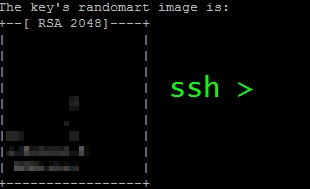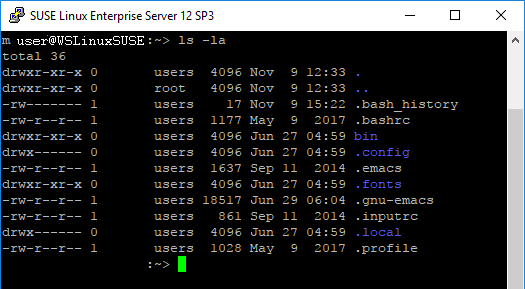

- SSH COPY TO LOCAL WINDOWS HOW TO
- SSH COPY TO LOCAL WINDOWS INSTALL
- SSH COPY TO LOCAL WINDOWS UPDATE
- SSH COPY TO LOCAL WINDOWS UPGRADE
- SSH COPY TO LOCAL WINDOWS PASSWORD
If you are using an older version of Windows, you can take a look at the WinSCP program.
SSH COPY TO LOCAL WINDOWS PASSWORD
Then confirm the installation with Y and type in a user name and password after a short wait. After the installation run cmd and type the command bash.
SSH COPY TO LOCAL WINDOWS UPDATE
Afterwards the developer mode must be activated under Start -> Settings -> Update and security -> For developers. In the now open window, look for “Windows subsystem for Linux (beta)”. Right-click “Start”, then on “Programs and Features” or for version 1703 “Apps and Features” and then on “Programs and Features”, then on “Activate or deactivate Windows features”. With this you can use the syntax already shown.
SSH COPY TO LOCAL WINDOWS INSTALL
Copy scp Copy scp you use Windows 10 as client (from version 16.07) you can install the Linux subsystem and get a Ubuntu Bash including APT. You can also use SCP to transfer files from one server to another, from your client. Make sure that the directories already exist. Copy scp Copy scp /root/lokalsecrets/test.file

The structure of the command has to be reversed. If you want to download a file from a remote computer, you can also use SCP. To transfer the file test.file to the other server use the following command: Copy scp /path/to/file Copy scp /test.file file is now transferred to /root/secret on the server with IP 10.10.0.12. Copy exit Transfer a file via SCPįor testing purposes, it is best to create a test file. Once you have successfully established the connection, you can close it again. You can also check the config of the SSH server and make sure that your user has the appropriate permissions. If everything is set up, the console of the remote computer should now be visible. Otherwise, the password for the user on the remote computer must be specified. Open a terminal from your Linux or Apple client and execute the following command: Copy ssh Copy ssh you are using an SSH key, enter the password for your key now. To test if the setup was successful, connect to your server via SSH. Then start the installation with the following command: Debian / Ubuntu Copy apt -y install openssh-server CentOS / RHEL Copy yum install openssh-server Fedora Copy dnf install openssh-server Establishing a SSH connection To update your Fedora system, use the following command. Therefore, the command is as follows: Copy yum update
SSH COPY TO LOCAL WINDOWS UPGRADE
For operating systems based on Debian (such as Ubuntu or Kubuntu), use the following command: Copy apt -y update & apt -y upgrade & apt -y dist-upgradeįor CentOS or Red Hat or similar distributions YUM is used as package manager. On the server side, depending on the distribution, you may need to install the SSH server service.Īs before any installation, you should update your server to the latest version. Since SCP or SSH as a client is a fixed part of every Linux distribution, you don’t need any further preparation on the client side. Since Linux servers can also be managed from a Windows client, I will also show you the free program WinSCP in the course of this article, with which you can also transfer data from Windows to Linux servers via SCP.
SSH COPY TO LOCAL WINDOWS HOW TO
How to create SSH keys and store them on your server is shown in this article. As with SSH, you can use SSH keys to establish SCP connections. Therefore you need a user who can also access the server via SSH. Nowadays FTP is not secure enough for internet use.

In the last article I showed you how to transfer data to a Ubuntu system via FTP. Unlike Windows, it’s best to specify whether you want an RSA key or something like Ed25519.Secure transfer of files between Linux and Windows via SCP Secure data transfer via SCP Open up Windows Terminal or the built-in Ubuntu command prompt (assuming you installed Ubuntu Linux). Why would you want to do this? If you primarily live in Linux for command line duties then it just makes sense to keep your keys in WSL. In fact, it’s basically the same as with the Command Prompt version. If you’re a WSL user, you can use a similar method with your WSL install. RELATED: How PowerShell Differs From the Windows Command Prompt Option 2: Generate Keys in WSL When you upgrade to a new PC you need to move those keys with your other files or risk losing access to your servers and accounts, at least temporarily. Just remember that the more keys you have, the more keys you have to manage. You can do that as many times as you like. You’d follow the same process as above, but when it came time to save your key you’d just give it a different name such as “id_rsa_github” or something similar. Say, for example, you wanted to use the default keys we just generated for a server you have on Digital Ocean, and you wanted to create another set of keys for GitHub. If you wanted to create multiple keys for different sites that’s easy too. Note: If you can’t see your “.ssh” folder in File Explorer, check out our tutorial on how to show hidden files and folders in Windows.


 0 kommentar(er)
0 kommentar(er)
